Filter well: an example of self-construction
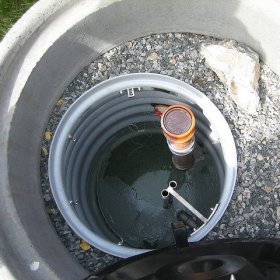
“Biological purifier” can be called a structure in which, using natural materials as a filter, biological contaminants are removed from wastewater after they have been preliminarily treated for suspended fractions. This method allows you to carefully use these waters for domestic purposes in a personal plot after stepwise purification. There are various ways to do this, but the most affordable and easiest is a filter well. Despite the apparent simplicity of the structure, its effectiveness is very high, about 70-80%. Its functionality largely depends on the porosity of the filtrate (sand, slag, peat, etc.). At the same time, to build such a well under the power of everyone. You just need to know some of the nuances.
The structural device of such a structure
Like any job, the construction of a filter well requires a sound strategy and thorough preparation. It is advisable to install a well in cases where the soil is sand and sandy loam, groundwater flows at depths exceeding 2.5 m. To do this, you should study the basics of theory and the design of a filter well.
The treatment plant is a deep mine, the "interior" of which is a well. It consists of a ceiling, walls and a bottom with filtered material.
Important: the shaft must be 0.8 m larger than the septic tank.
Preparatory phase - design and site selection
-
- Very carefully chosen place for the future mine. It should be no closer than 10 m from the foundation of a residential building. If there is a drinking krinitsa on the site, then the location is selected within the range of 25 to 30 m from it.
- The estimated area of the future building is calculated. The areas of the bottom and all walls are added up. The resulting amount is multiplied by the height of the filter layer. The value (area) calculated in this way is the calculated value. But, in any case, it should not go beyond 2x2 m2. Another indicator is depth. Its parameters are within 2.5–3 m.
It should be aware of the passage of groundwater on the site. It is not allowed that they pass closer than 1 m from the bottom of the structure. The maximum rise in water is observed in early spring during the period of melting ice and snow.
Tip: in the absence of groundwater data, you should experiment - you just need to start digging. If wet soil is detected and water is present at a depth of up to 1 meter, work should be stopped - you cannot build a well here. If signs of moisture appeared after 1.5–2 m - this is precisely the place for the installation of a hydraulic structure.
Filter Selection Features
The preparation of the filter material consists in the transportation of crushed stone, pieces of peat, broken brick, slag, coke.Fractions of the material should be small (particle size 30mm). Once they reach them, the wastewater covers the filter pieces with sludge, in which there are microorganisms that process, in the process of life, organics into useful minerals and clean the effluents.
The formed filtrate should go through sandy soil or sandy loam. At the same time, sand has a better throughput than sand. Fine-grained crushed stone is laid, beaten brick and dump slag are poured on top. The same material fills the gap between the walls of the well and the shaft. Finally, the water is purified by passing through a layer of soil.
Tip: the calculation of the surface of the filter layer is carried out on the basis of these daily loads per unit area: 40 liters per day for sandy loam and 80 l / day for sandy soil.
The shape of the well can be either round or square. The best materials for the construction of walls: red brick (burnt), monolithic concrete, reinforced concrete, clay brick or "holey" prefabricated reinforced concrete rings. It is very important to take into account the fact that the water that enters the filtration well not only seeps through the walls, but also goes through the bottom. Therefore, a concrete screed is carried out along its perimeter, without capturing the central part, where the soil passes water into the soil.
Step-by-step instructions for construction
-
- The masonry is heterogeneous: first, at the height of the filter (1 m), it is carried out with a “checkerboard” with 30 mm holes for water to leak out. Further, the material and method of masonry are changed. The walls are laid out solid, stone or brick, or concrete rings are installed.
The drainage pipe is installed 10 cm above the bottom filter with a slight slope. Its open end should be located in the center of the shaft, and under it - a container with holes for water.
Attention: air gap is mandatory!
- The upper part of the well is covered by a ceiling: from wooden panels or reinforced concrete covers. A hole is needed, and the hatch should not be less than 700 mm in diameter, with two covers, one of which is designed to protect the system from freezing. Between the covers thermal insulation is laid in the form of mineral wool or burlap, for example. Roofing material spreads from above and a half-meter layer of soil is poured.
- Be sure to leave a place for the ventilation outlet with a fly lamp. The pipe with a diameter of 0.1 m and a height of 1.0 m serves as a ventilation riser, which is displayed on the side of the well.
By the way: the visible part of the septic tank can become part of the exterior if it is equipped with a flower pot or flowerbed.
Having prepared the necessary materials and tools, armed with theory, one can proceed to the construction of a filter well even to a person who does not have a building education. Believe me, there is nothing impossible for an inquiring mind and skillful hands.
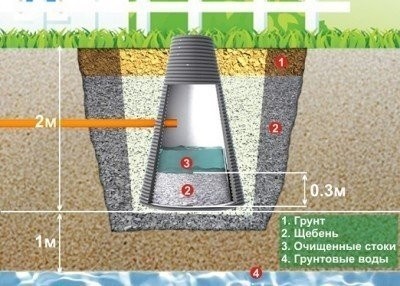
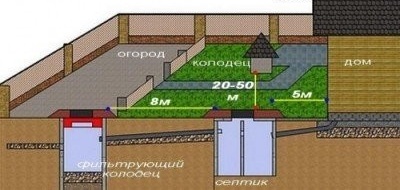
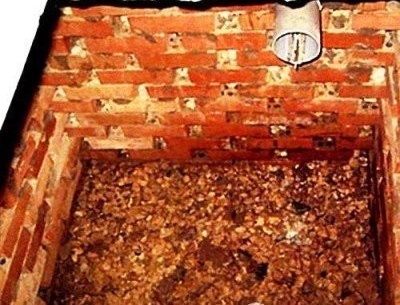
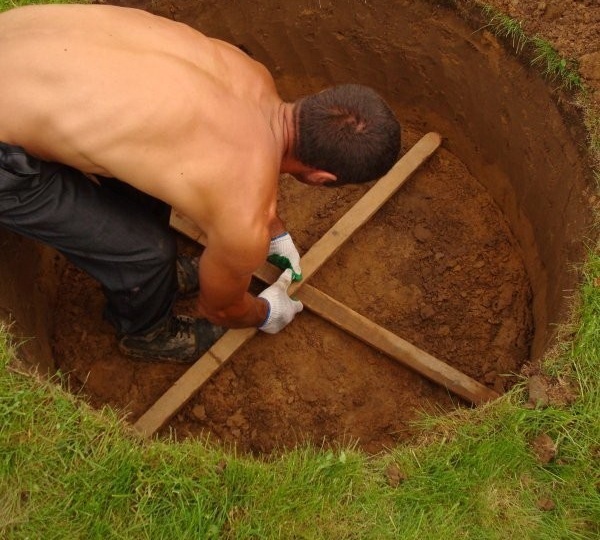
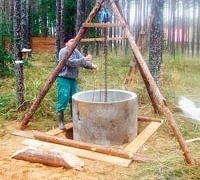
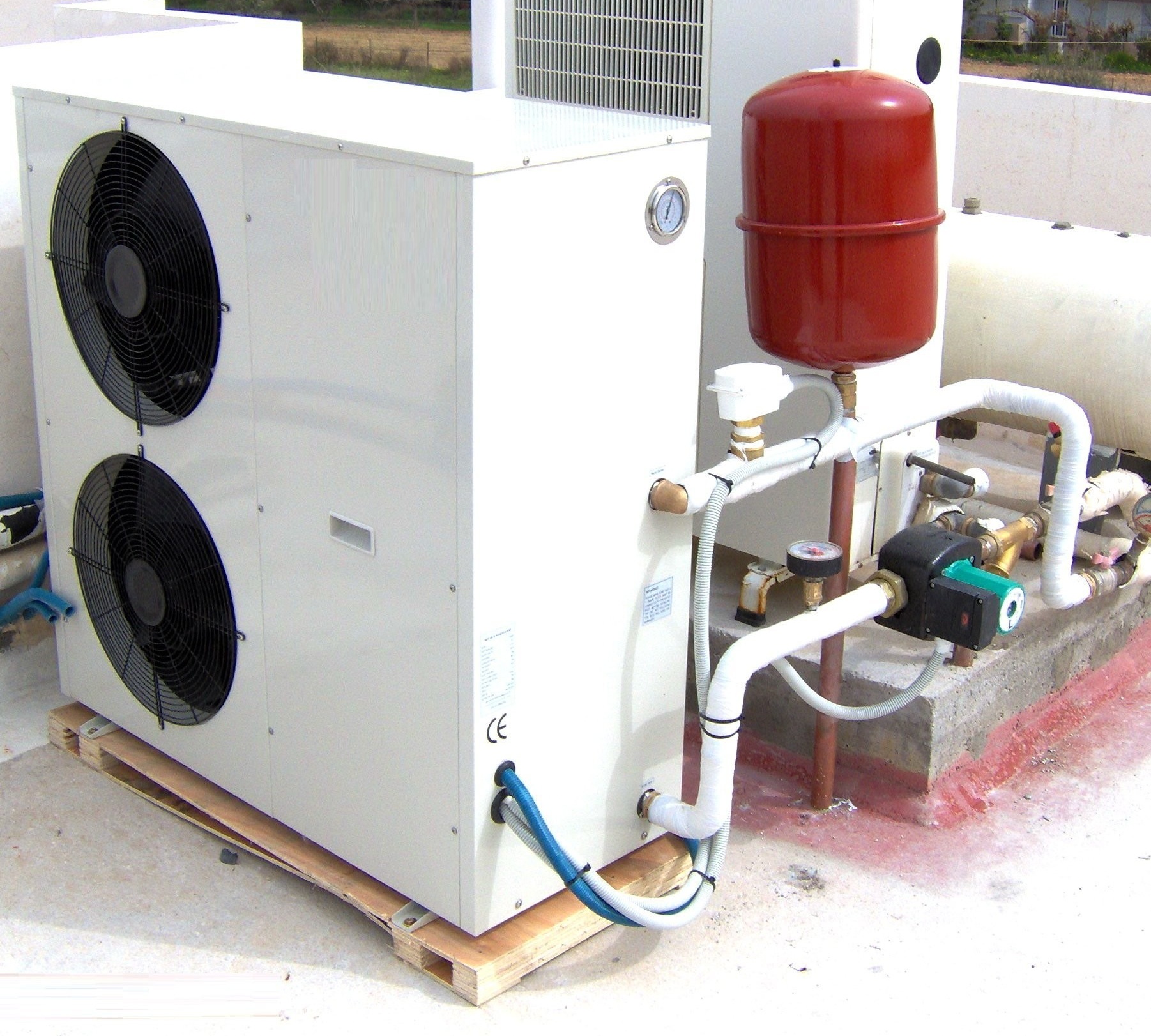
3 comments